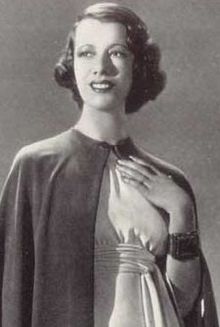A worthy question — did Geraldine Farrar have screaming girl fans only because of her opera success, or because she was also a silent movie star?

But then there are so many other anecdotal reports of a young classical audience, including MIT students who snakedanced through the streets to go to Boston Pops concerts. That was early in the 20th century. By the 1930s, the college crowd at the Pops was more restrained. They’d go to concerts on dates, and demand the Brahms Academic Festival Overture, because it quotes a familiar student song. (Go here for documentation, from a 1940 book by Margaret Grant and Herman S. Hettinger, America’s Symphony Orchestras and How They Are Supported.)

I doubt those numbers are even close to accurate, and if they are, they show that absolutely NO musician in today’s culture has that kind of draw.
Even Lady Gaga herself only got 90,000 people to Grant Park last summer, in a Lollapalooza festival with “record breaking” attendance of 240,000 over three days.
This was a 3-day festival that included Green Day, Lady Gaga, and dozens of other bands including many of the most famous indie bands of the last 15 years, from Blues Traveler to MGMT to the New Pornographers.
If they can’t draw those kinds of crowds today, no one can. Please maintain some perspective.
Greg. your comment about the MIT students snake-dancing to the Boston Pops concerts makes me wonder if that happened on “MIT Night” at the Pops (an annual event, similar to “Harvard night” and “Tufts night” and perhaps a few others, when Symphony Hall was booked by a college group (usually an alumni organization), which then resold the tickets on campus to what was regarded as a night for rather wild festivity (including acrobatic acts on the tables and in the balconies by concert-goers who were several sheets to the wind. The tables on the main floor became essentially a stag party–their dates were relegated to the balconies!
For Harvard night in 1902, a newspaper review ran in part like this:
8:04 P.M.—Orchestra arrives—on the installment plan. Musicians plug their ear drums and take a hopeful look at accident insurance policies.
[The orchestra actually started playing at 8:11]
8:50 Orchestra is heard for the first time. They play the “Serenade” [selections from Victor Herbert’s operetta of that name]. The gang all join in.
9:10 9:20 Intermission is scheduled on the programme, but nobody on the floor notices it. Musicians slink away for fresh ear pads and consultation with Pabst [beer]. Cheering continues.
9:40 Orchestra has been bravely at work for 20 minutes, but no one minds them.
I can’t help wondering whether events like this provide the best evidence for your thesis!
Hello,
I have been reading your blog and other articles with much interest for several years but have never sent in comments. I really appreciate your important work. Here is a link to a Time Magazine article from the early 1960s about Van Cliburn and the wild outdoor crowds. I cannot imagine that there were not a lot of younger people at this particular concert. Seniors simply do not behave like this. What pianist today could provoke such a scene? Hope it is interesting.
http://www.time.com/time/magazine/article/0,9171,895597,00.html
Herbert Pauls